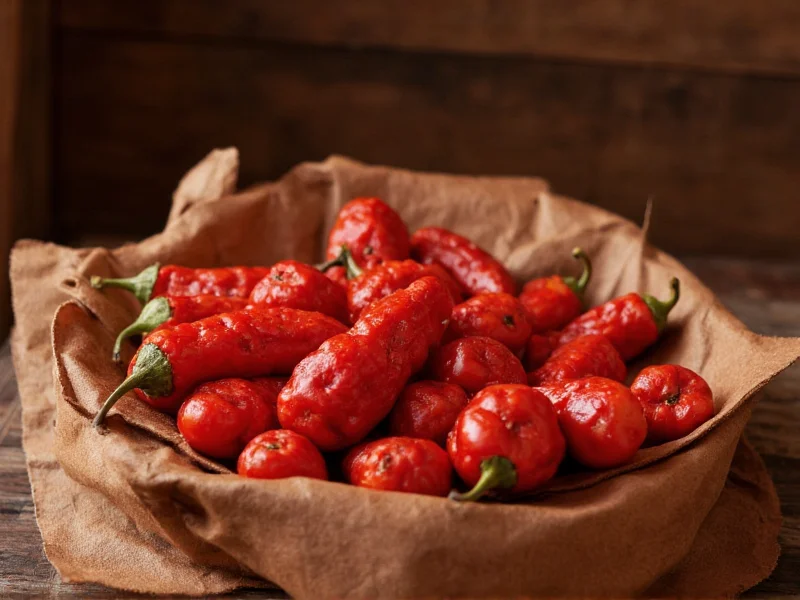Aleppo pepper, known locally as Halaby pepper or Halapeño, has gained international popularity for its complex flavor profile that extends far beyond simple heat. Originating from the Aleppo region of Syria and widely used in Turkish cuisine, this dried, crumbled chili pepper delivers a distinctive culinary experience that explains its growing presence in kitchens worldwide.
Understanding the Scoville Scale Context
The Scoville scale measures chili pepper pungency (spiciness or heat) by determining the concentration of capsaicinoids, primarily capsaicin. Developed by pharmacist Wilbur Scoville in 1912, this measurement system remains the standard for comparing pepper heat levels. When evaluating aleppo pepper scoville heat scale positioning, it's essential to understand where it fits among common culinary peppers.
| Pepper Variety | Scoville Heat Units (SHU) | Heat Level |
|---|---|---|
| Bell Pepper | 0 SHU | Mild |
| Poblano | 1,000-2,000 SHU | Mild |
| Paprika | 500-1,000 SHU | Mild |
| Aleppo Pepper | 10,000-30,000 SHU | Medium |
| Cayenne Pepper | 30,000-50,000 SHU | Medium-Hot |
| Tabasco Pepper | 30,000-50,000 SHU | Medium-Hot |
| Habanero Pepper | 100,000-350,000 SHU | Very Hot |
What Makes Aleppo Pepper Unique Beyond Heat
While the aleppo pepper scoville rating places it firmly in the medium category, its culinary value extends far beyond simple heat measurement. Unlike many peppers that offer primarily capsaicin-driven heat, Aleppo pepper delivers a nuanced flavor profile characterized by:
- Fruity undertones - subtle notes of dried fruit and berry
- Saltiness - traditionally cured with olive oil and salt
- Earthy depth - more complex than standard red pepper flakes
- Medium heat build - warmth develops gradually rather than immediate burn
This distinctive combination explains why chefs and home cooks increasingly seek Aleppo pepper as a preferred alternative to generic red pepper flakes. When considering how hot is aleppo pepper compared to cayenne, note that while cayenne typically starts around 30,000 SHU (at the upper limit of Aleppo's range), cayenne delivers a sharper, more immediate heat without the fruitiness.
Culinary Applications and Heat Management
The aleppo pepper heat level for cooking makes it exceptionally versatile. Its moderate Scoville rating allows for generous use without overwhelming other flavors—unlike cayenne, which requires more careful measurement. Professional chefs appreciate how Aleppo pepper enhances dishes through:
- Finishing applications - sprinkled on pizzas, roasted vegetables, or hummus
- Marinades and rubs - complements meats without excessive heat
- Sauce enhancement - adds depth to tomato sauces and stews
- Bread seasoning - excellent in flatbreads and focaccia
When substituting Aleppo pepper in recipes, remember that aleppo pepper vs red pepper flakes heat differs significantly. Standard red pepper flakes typically measure 5,000-25,000 SHU but lack the nuanced flavor. For equivalent heat with similar flavor complexity, use 1.5 times the amount of red pepper flakes plus a pinch of salt and a touch of smoked paprika.
Storage and Selection Tips
To maintain optimal flavor and heat characteristics, proper storage matters. Authentic Aleppo pepper should:
- Appear deep burgundy to brick red (avoid brownish varieties)
- Have visible flecks of salt (traditional preparation includes salt curing)
- Be stored in an airtight container away from light and heat
- Remain potent for 6-12 months when properly stored
When evaluating is aleppo pepper hotter than paprika, the answer is definitively yes—paprika ranges from 500-1,000 SHU for sweet varieties up to 10,000 SHU for hot paprika, while Aleppo consistently starts at 10,000 SHU. However, paprika offers different flavor compounds that don't directly compare to Aleppo's unique profile.
Why Aleppo Pepper's Heat Profile Matters
The specific aleppo pepper scoville rating chart position makes it ideal for dishes where you want noticeable heat without dominating other flavors. Unlike cayenne which can quickly overwhelm, Aleppo pepper's gradual heat release allows multiple flavor notes to shine through. This characteristic explains its traditional use in Middle Eastern cuisine where balance between spice, acidity, and richness is paramount.
Home cooks discovering Aleppo pepper often wonder about aleppo pepper scoville heat comparison to familiar spices. While similar in heat range to jalapeños (2,500-8,000 SHU) when fresh, the drying process concentrates flavors and increases heat—dried Aleppo reaches 10,000-30,000 SHU, making it significantly hotter than fresh jalapeños but milder than many realize given its sophisticated flavor profile.











 浙公网安备
33010002000092号
浙公网安备
33010002000092号 浙B2-20120091-4
浙B2-20120091-4